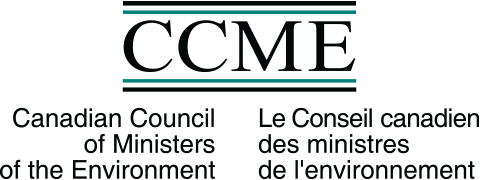Waste
Environment ministers are committed to taking action within their jurisdictions and through CCME to improve Canada’s record on reducing and recycling waste.
In September 2014 environment ministers adopted a vision for waste: Canada is a world leader in waste management.
CCME’s current priorities on waste are to increase waste reduction and resource recovery, contribute to the transition toward a circular economy in Canada, and promote approaches that shift responsibility from taxpayers to producers and users. CCME is currently addressing these priorities by implementing the Canada-wide Action Plan on Zero Plastic Waste.
Current work includes:
- assessing policy options and best practices to improve the end-of-life management of fishing and aquaculture gear
- compiling a reference compendium of existing guidelines for recyclability
- developing guidance on the use of labels and terms such as recyclable and compostable to facilitate common understanding
- developing guidance on best practices to reduce plastic waste entering the environment from stormwater, wastewater, and industrial discharges, and food and organic waste processing and sewage biosolids (e.g., contamination from plastics in compost)
Zero Plastic Waste
Plastic waste and litter in oceans, inland lakes and waterways have emerged alongside climate change as a global environmental priority.
In November 2018 environment ministers agreed to work collectively toward a common goal of zero plastic waste. To this end, they approved in principle a Strategy on Zero Plastic Waste, which outlines a vision to keep all plastics in the economy and out of the environment. The Strategy outlines areas where changes are needed across the plastic lifecycle, from design to collection, clean-up and value recovery, and underscores the economic and business opportunities resulting from long-lasting and durable plastics.
In June 2019 environment ministers approved the Canada-wide Action Plan on Zero Plastic Waste: Phase 1, which focuses on: product design, single-use plastics, collection systems, recycling capacity and domestic markets. In July 2020 environment ministers approved the Canada-wide Action Plan on Zero Plastic Waste: Phase 2, which focuses on: consumer awareness, aquatic activities, research and monitoring, clean-up and global action. Together, phases 1 and 2 lay out concrete measures to keep plastics in the economy and out of the environment. Federal, provincial and territorial governments worked together and with a broad range of stakeholders and interested parties to identify the priority actions in the action plan.
Aspirational Canada-wide Waste Reduction Goal
In November 2018 ministers endorsed a Canada-wide aspirational waste reduction goal, meant to encourage and highlight waste reduction progress in Canada.
The Canada-wide waste reduction goal does not set a specific jurisdiction-by-jurisdiction target. It will complement waste reduction efforts within each jurisdiction. Canada is on its way to meeting the 2030 goal, as some jurisdictions have adopted ambitious policies and programs to prevent and divert major waste streams such as organics and packaging.
In 2014, each Canadian threw away an average of 706 kg of all types of waste. The Canada-wide goal is to reduce this to 490 kg per person (a 30% reduction) by 2030, and to 350 kg per person (a 50% reduction) by 2040.
Progress will be measured through the Statistics Canada biennial Waste Management Industry Survey kg/capita measure.
Extended Producer Responsibility
Extended producer responsibility (EPR) is an environmental policy approach in which a producer's responsibility for a product is extended to the post-consumer stage of a product's life cycle.
Building on the 2009 Canada-wide Action Plan for Extended Producer Responsibility (CAP-EPR) and Canada-wide Strategy for Sustainable Packaging, in 2022 CCME published Guidance to Facilitate Consistent Extended Producer Responsibility Policies and Programs for Plastics. This guidance provides a foundation on which to build greater consistency through, for example, common product categories and definitions for plastics.
